Architect: Art Schaupeter
Walkable: Yes
Highlighted Holes: 3, 4, 6, 7, 15
In my eyes, Highland Meadows is something of a hidden gem. That’s not because people don’t know of it, they do; and not because it isn’t recognized as a good course, it is. In Colorado, the population center is Denver. Riverdale (Dunes), CommonGround, and Murphy Creek are all fawned over because they’re great public courses and reasonably priced, while Windsor is just far enough north that the majority of people aren’t likely to travel to play it. They’re more likely to head into the mountains or down Castle Rock/Larkspur for a getaway, keeping it out of the great Colorado public golf conversation.

The course was built as part of a housing development just off the interstate near Loveland, and it feels like the architect, Art Schaupeter, got the best land on the property. Most of the houses are far enough away that they don’t impede play and many of the holes are routed along or over arroyos which add the right amount of interest and decisions. The course is a true strategic design as each hole gives you options: take the risk and have the potential to go low (or high)? Or play responsibly and have no guarantees on your approach? With the kind of opportunities you’re faced with, and where the most impactful ones arise, Highland Meadows would be a fun site for match play.
The course is an excellent demonstration of Schaupeter’s approach to hazards. He told Golf in the United States,
“Excessive and overly penal hazards (out of play, water, out of bounds) are not the right way to provide the ‘bite’ in a course. It must be subtle, varied green contours, varied green surround contours, multiple angles of approach to the greens, different ground contours and angles, offset hazards and minimal hazards.”
The greens have fun, tumbly rolls to them, offering multiple ways to approach a hole. Their shelves aren’t hidden from you and only offer real challenges when some of the rest of the hole is perhaps a little more forgiving, like on 4 and 7.
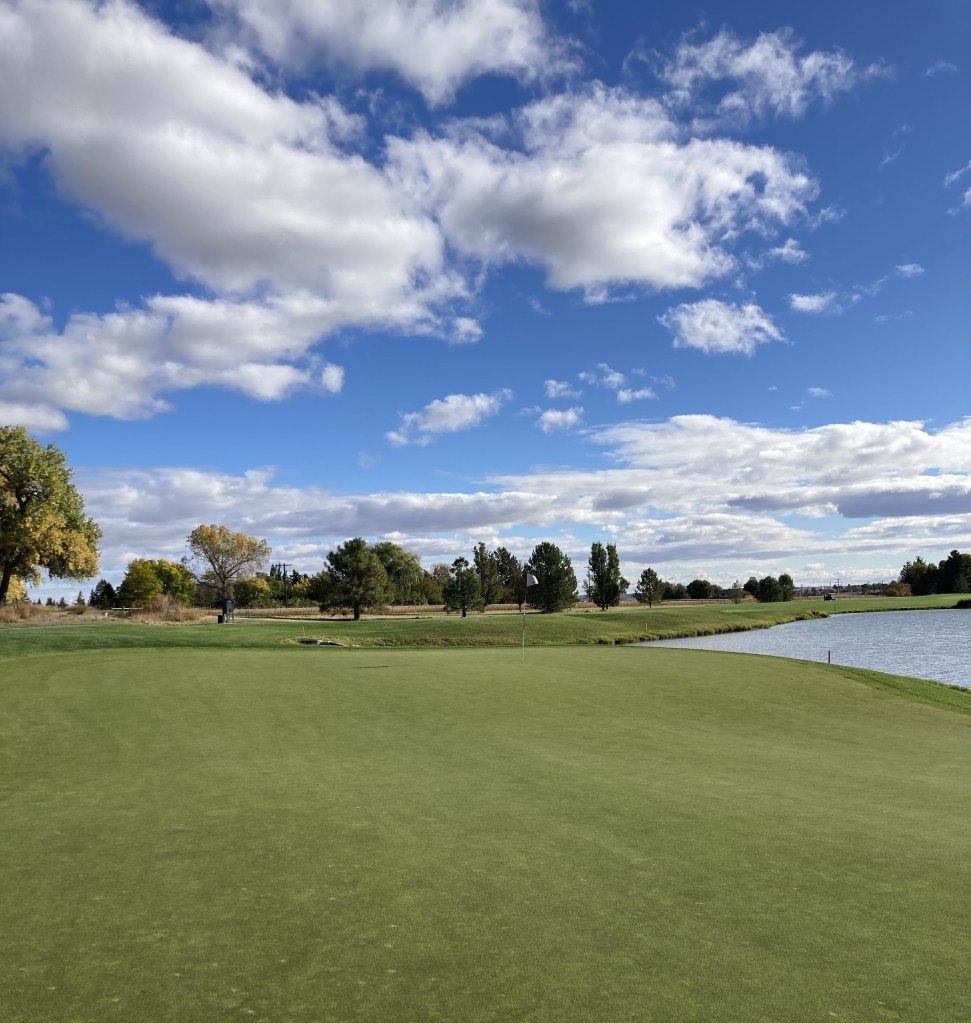
There is good variety on this par 71. Five par threes offer a good mix of short and long shots that you can feed in, drop in, or bail out of. The par fives are distinctive as well, offering a double (or even triple) dogleg, a bite-off-what-you-can-chew cape hole, and a long downhiller that offers stunning views of the surrounding prairie.
While this isn’t something I often notice or call out, the conditioning at Highland Meadows is spectacular. I played it in January, and while there were snow piles in shadows and dormant grass, the greens were fast and true, and the fairways had no issues. When I’ve played it in the summer and fall, it’s one of the best kept public courses on the front range.
Four: The fourth is a short par three over water. There are many like it, but this one is Highland Meadows’. The hole is defended by the water and a back bunker, but what really makes this hole stand out is the double mounded green. There aren’t two tiers as much as two rolls that make it delightfully fun to putt on. The photo above is of the fourth green.

Six: The sixth is difficult for a number of reasons. First, it’s a long hole: 456 yards and the best line off the tee isn’t readily apparent. An aggressive play would be to play over the pond and bunker to the tiny landing area ahead of the green. This perilous shot is made all the harder knowing you need to stop a driver on it. From there, your next shot is still over an arroyo with the only forgiving miss being front left.
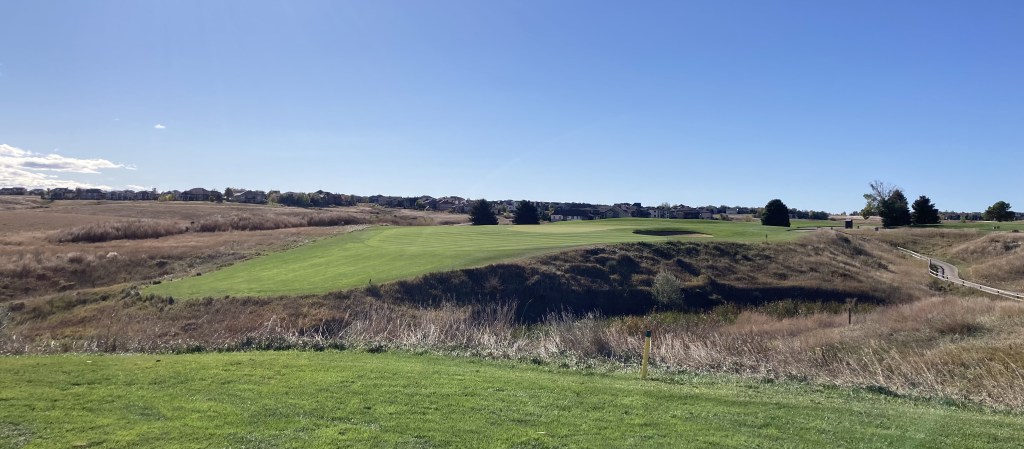
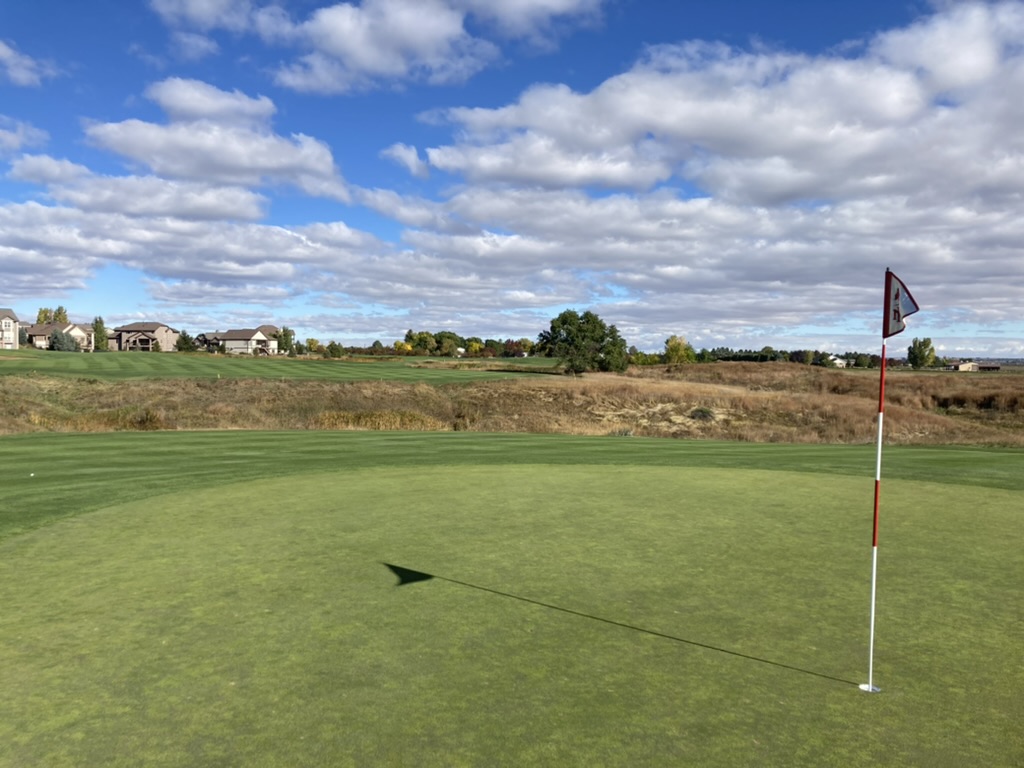

Seven: Who doesn’t love a short par four? The seventh asks, “so where are you going to lay up to?” Three large bunkers dominate your view off the tee. The spectacular pot bunker in front defends any approaches to a left pin. The green is two tiered and par is a good score from just about any position on the hole. If you can carry it to the green and avoid the pot bunker however…

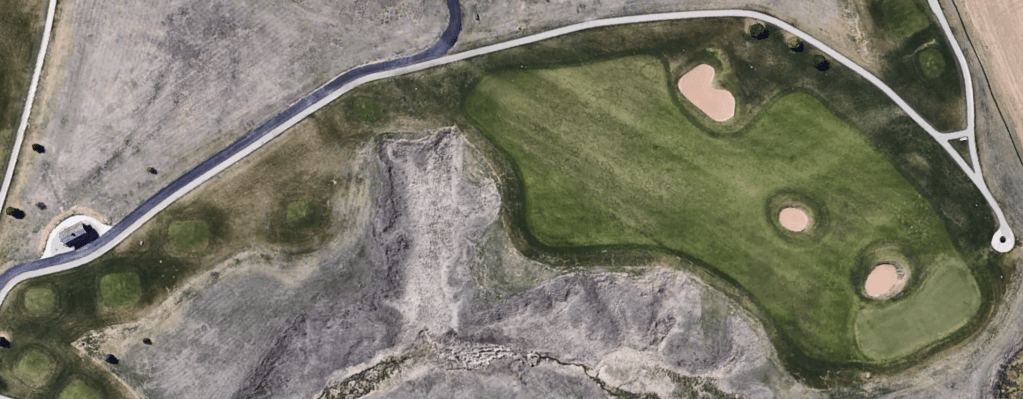
Fifteen: Fifteen begins the stretch where matches can start to get interesting. The safe tee shot is blind, uphill, and over four bunkers the obscure any hint of a landing area. Now, there is a temptation to cut those bunkers right out by carrying it over the corner, over the junk, but that shot looks more doable in person than it actually is. If you have the length or determination to try this shot, you’ll have a mid-iron in and an opportunity for eagle.

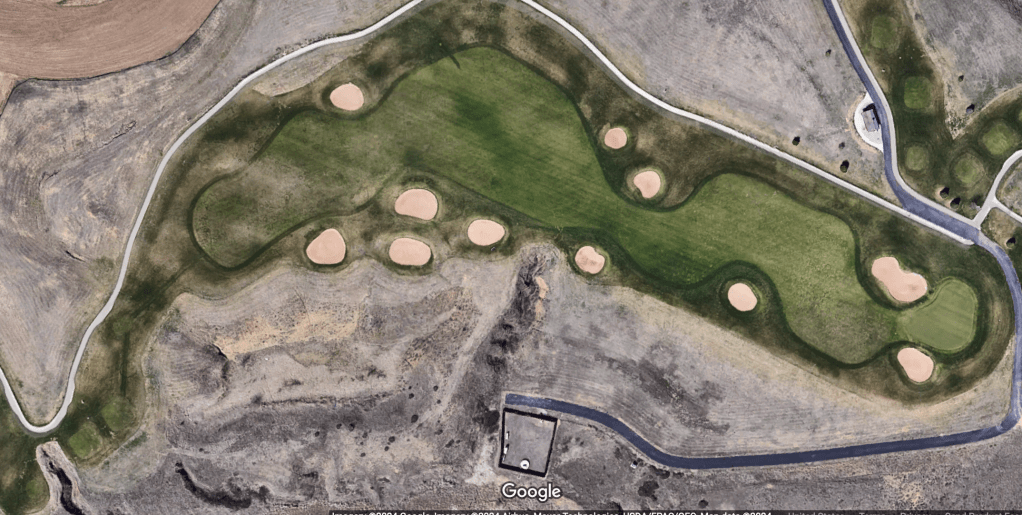
Final Thoughts:
Highland Meadows is an excellent track that shows off the skills of Art Schaupeter, a product of the Keith Foster design tree. Schaupeter has another course on the other side of the interstate in TPC Colorado, host of a Korn Ferry event every summer and home to the longest set of par fives in competitive golf. If it’s anything like the course in Windsor, I hope to bring you a glowing review in no time.
The Colorado Golf Association should strongly consider the course for it’s match play tournament as the good variety of risk/reward shots couldn’t lead to anything but excitement. The 14th, 16th, and 18th are three wonderful closing holes that will leave you with decisions to make. For good strategic golf at a solid price, look no further than Highland Meadows.
Further Reading:
Golf in the United States. – Highland Meadows Golf Course — Golf in the Player’s Hands
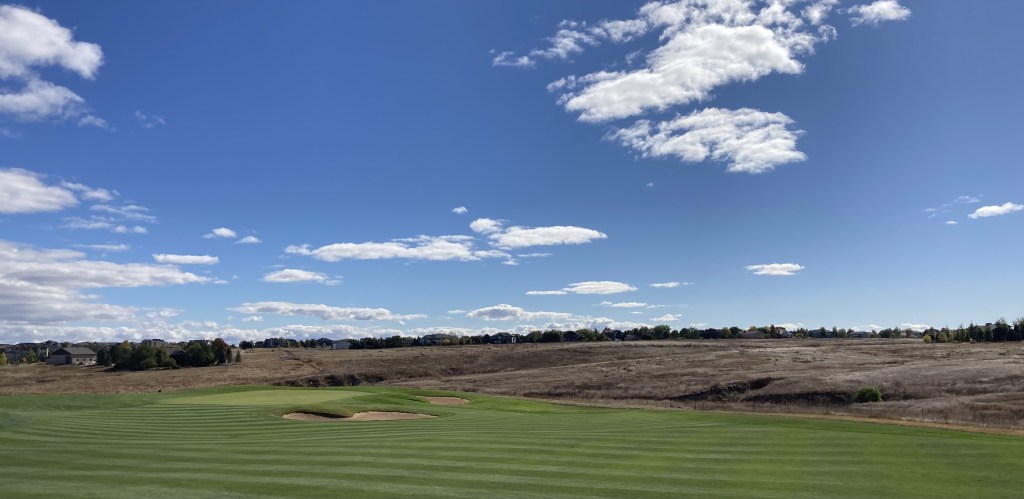
Leave a comment